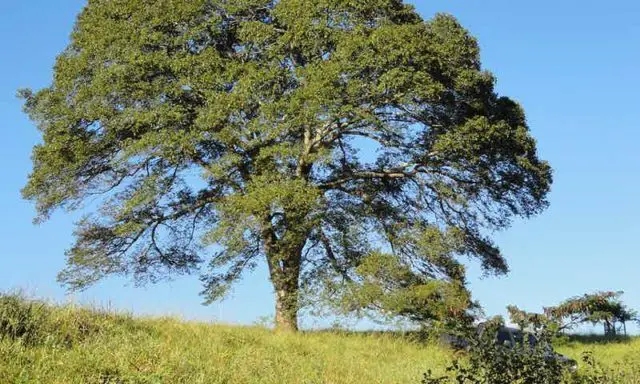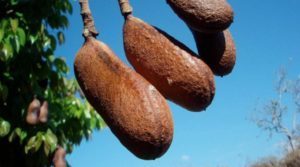“Guapinol” tree (Hymenaea courbaril) is very typical of the lowlands of our region. It is a tree full of qualities, not only as a forest species of high value for its wood but for the excellent nutritional value of its fruit.
According to the “Mundo Forestal” homepage, its name in Nahuatl means “flour tree”. It has a penetrating smell -that is why it is also known as “Stinking Toe”- and dusty appearance. This fruit was mixed with corn flour for making tortillas.

Guapinol was important not only as a source of food, but also for its wood, amber, and the use of wood rich in incense resins in the rituals of our aborigines.
The fruit measures from 5 to 12 centimeters; it is a pod of a dark brown reddish color, and inside contains 4 or 6 seeds covered with a pulp with a brownish yellow color -certainly, edible and sweet- with which you can make smoothies.
On the other hand, guapinol is a tree of very hard wood and very appreciated for the construction activity. The bark and leaves are credited with healing properties such as stopping diarrhea, as it turns out to be an excellent antidiarrheal. It also eliminates stomach pain; it is antidiabetic and antirheumatic. In some cultures, it is used to combat dysentery, urinary tract infections, and hypertension.

In Costa Rica, it is a not very abundant tree but, despite this, it can be found on the Pacific coast, in many places in the North, and the Atlantic Huetar region. It grows up to 1,000 meters above sea level.
With the fruit of guapinol, the Mesoamerican indigenous people made food consisting of a mixture of corn, peanuts, cocoa, and the powdered pulp of guapinol. These were so finely ground that they could be mixed with water to obtain a drink with nutritional, physiological, healing, religious and even magical properties, explains Mundo Forestal.

